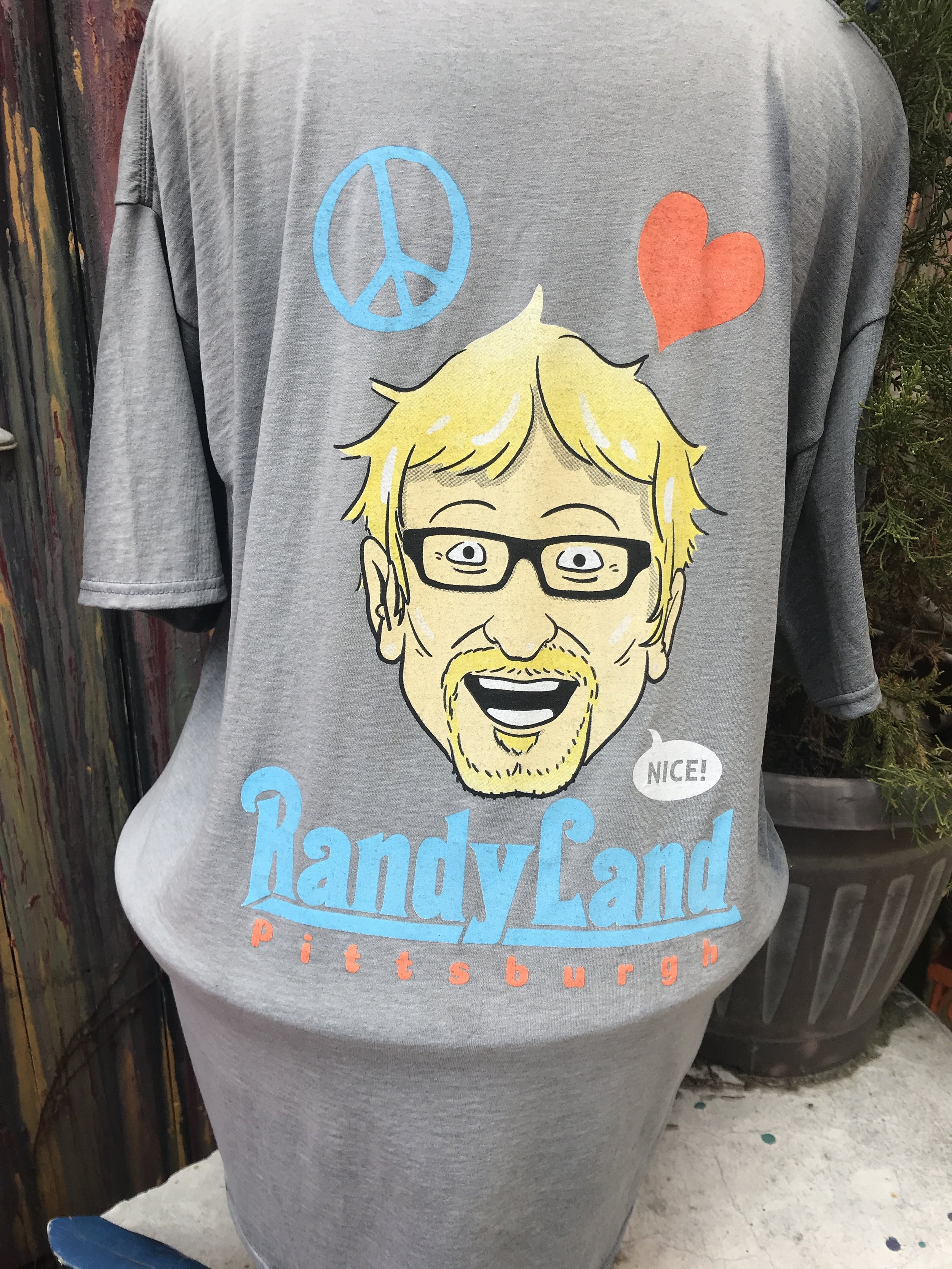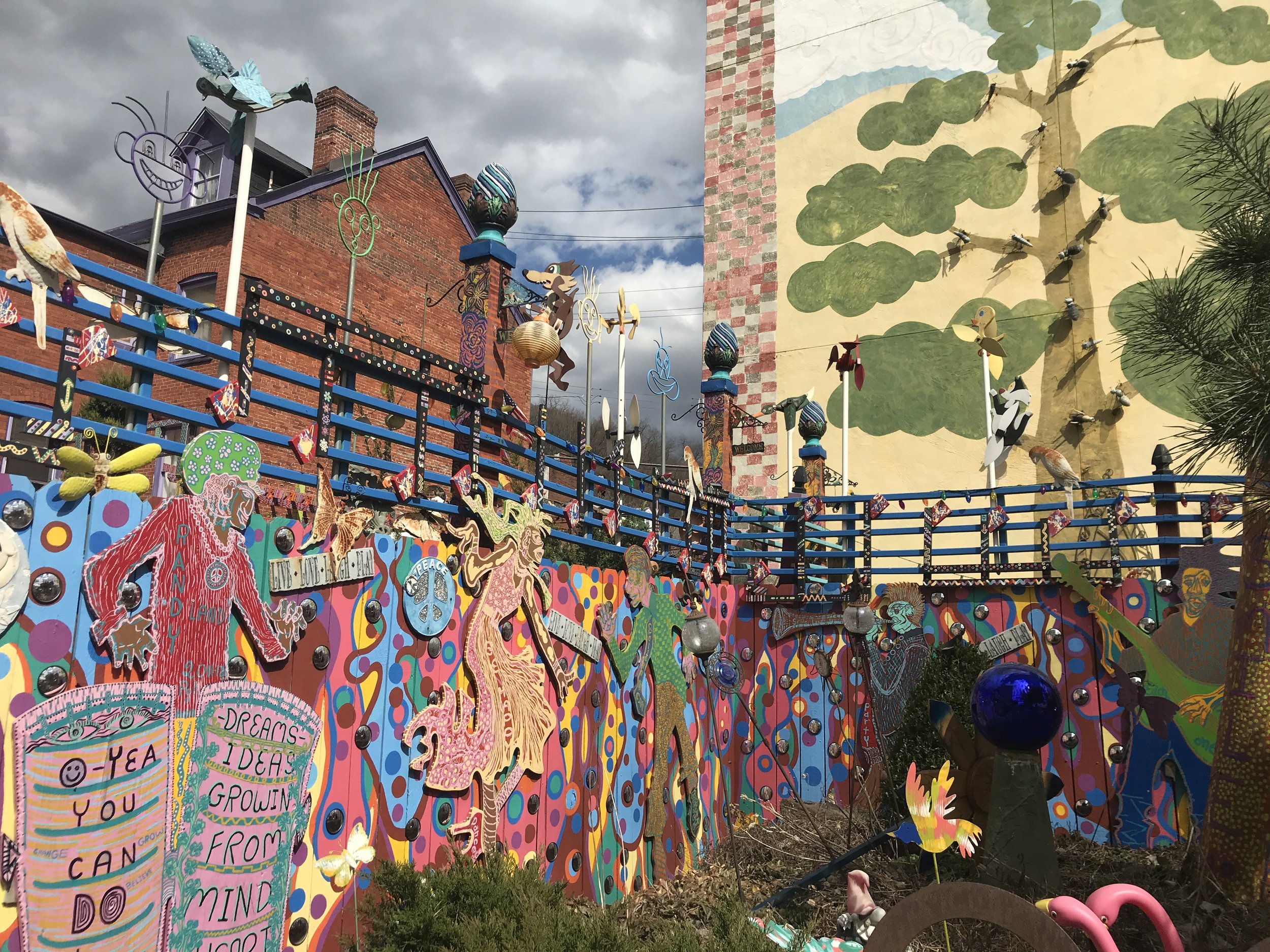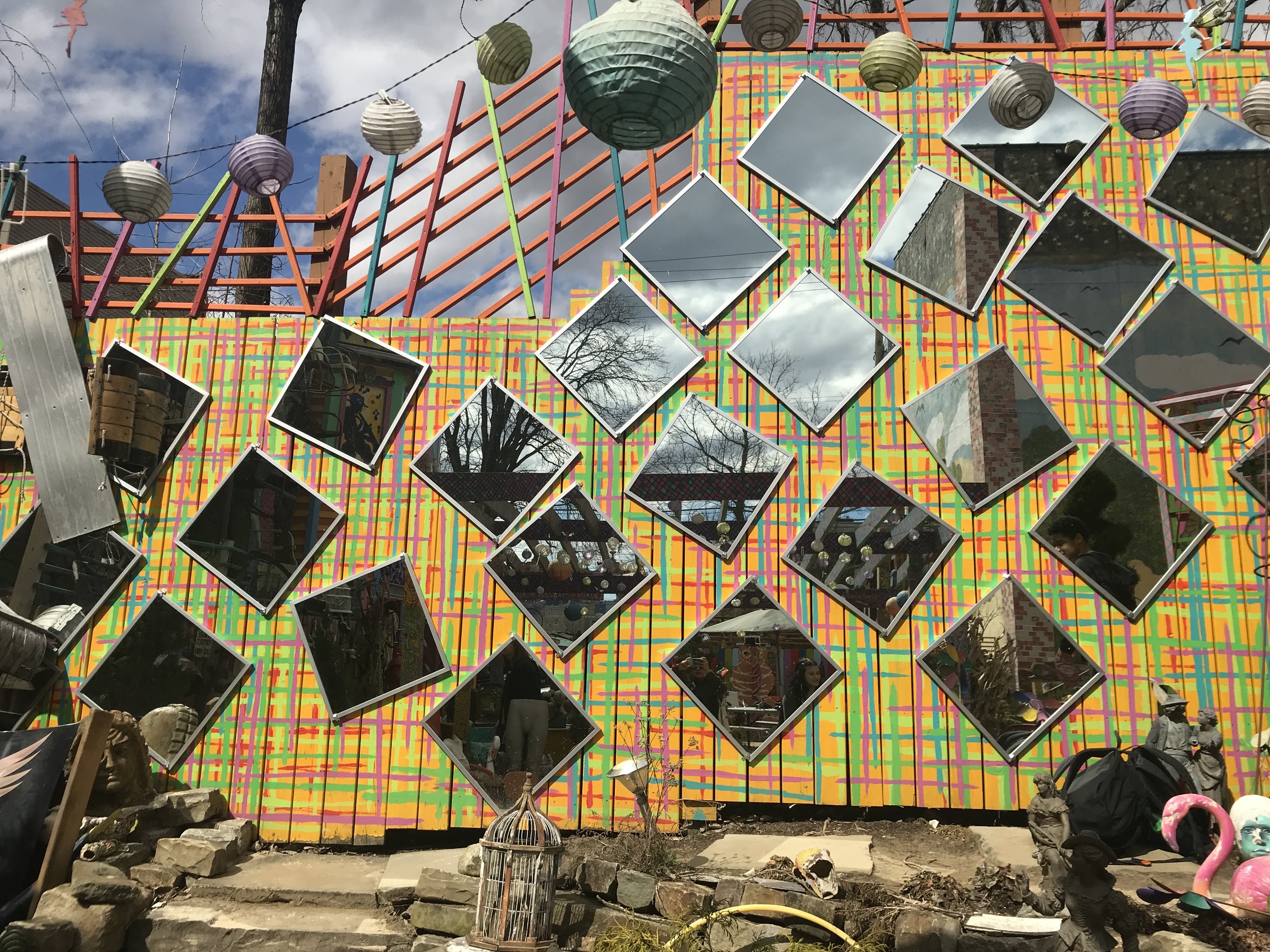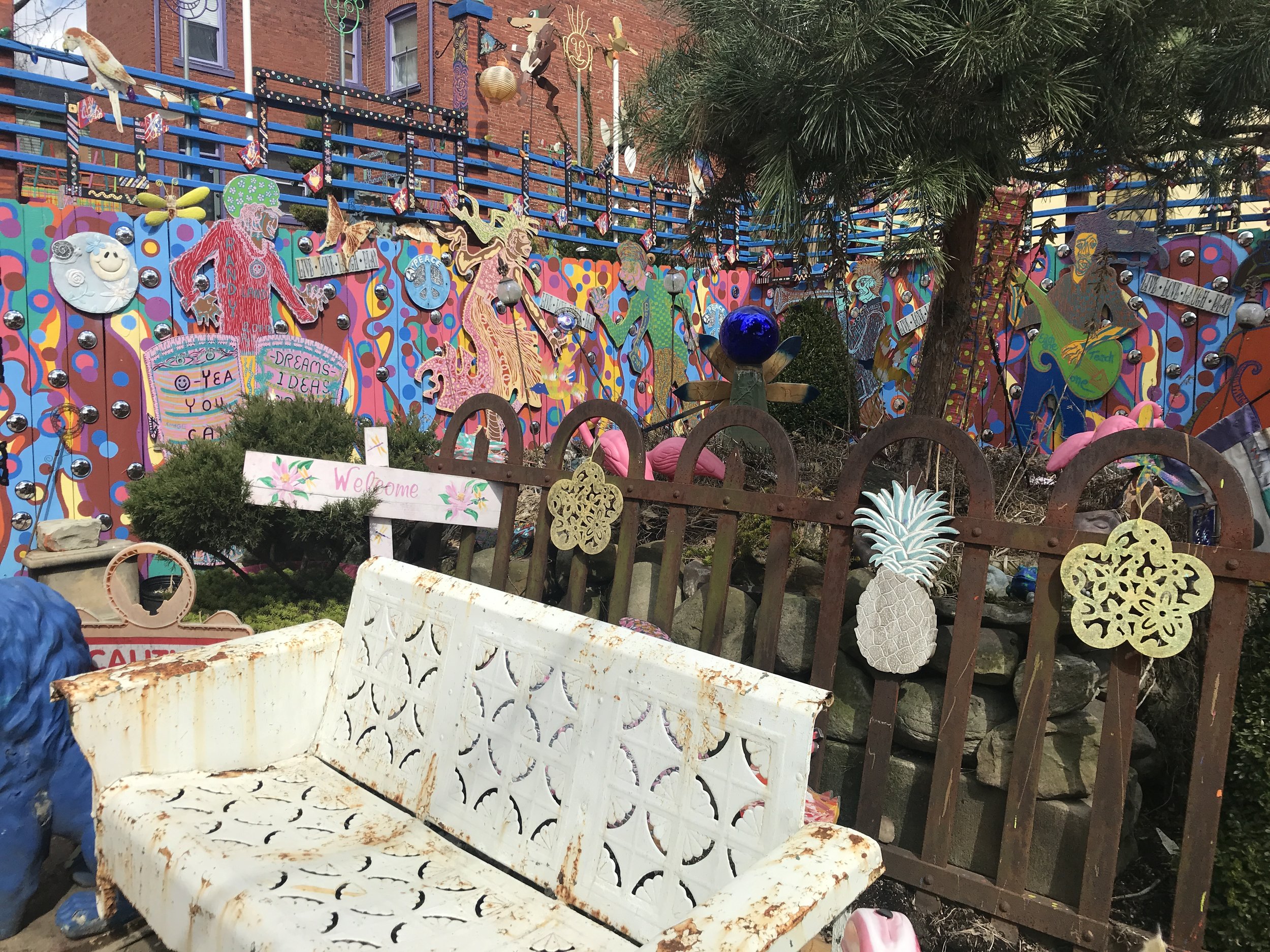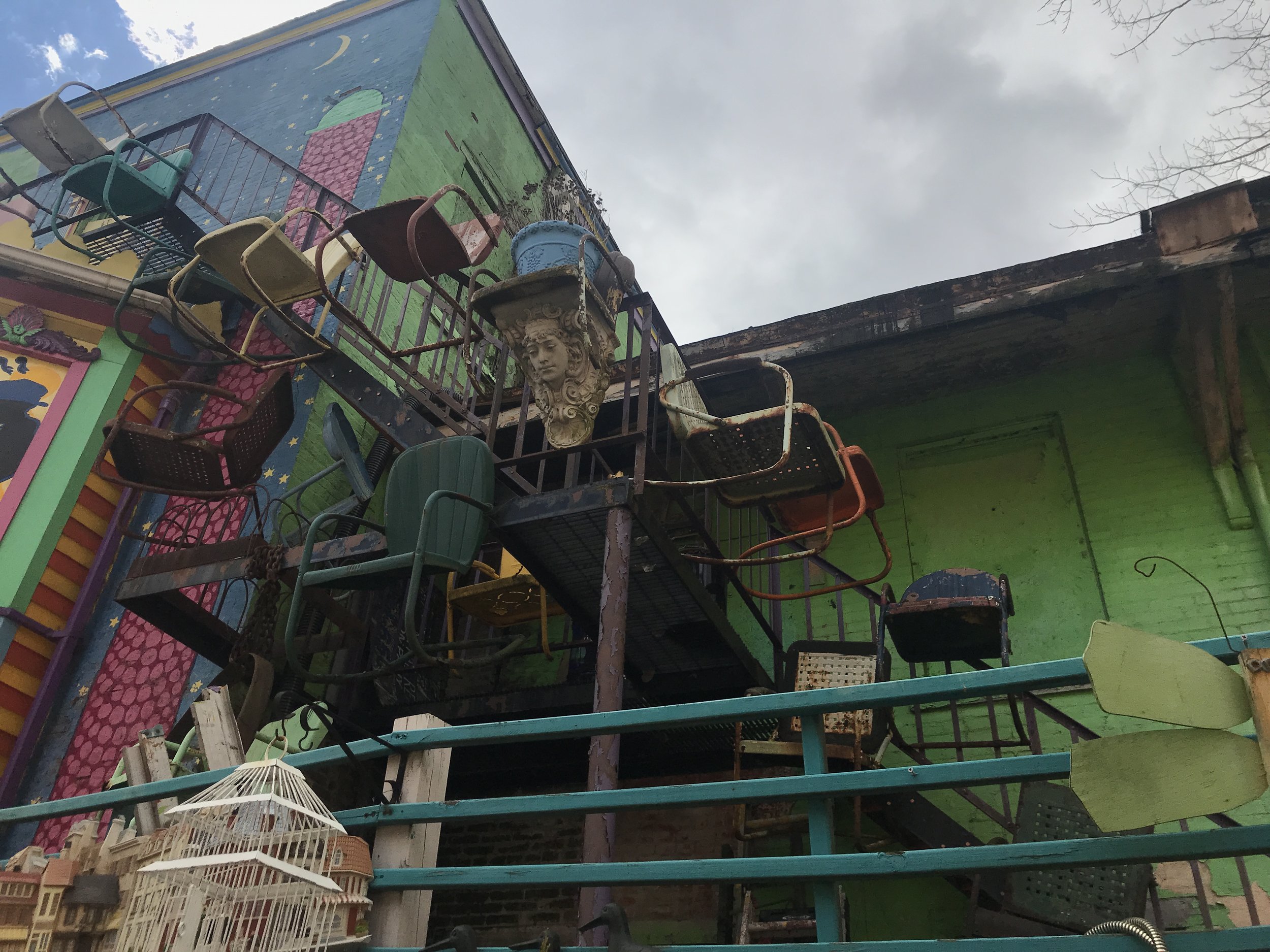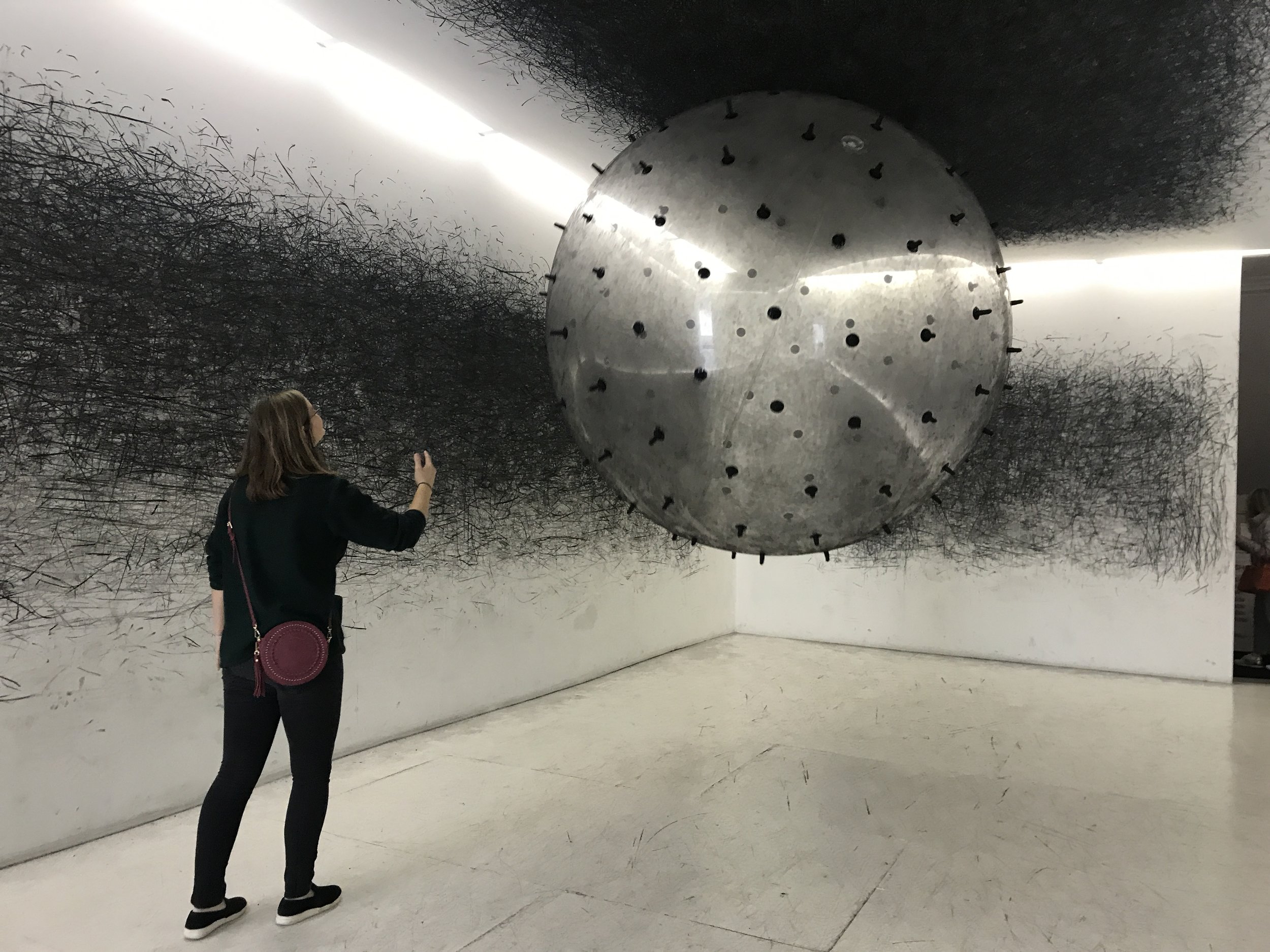After hearing the name Randyland multiple times in the past few weeks, I finally had the chance to go. And boy, was it randy… I’m just kidding, it wasn’t (don’t worry this is a PG-13 blog).
Randyland is home to Randy Gilson, a local artist who bought the property in 1995 and began to build a wonderland of eccentricity. The property is completely free and open to the public to enjoy. Sometimes Randy himself even appears and provides history or just preaches love (unfortunately, I did not have the chance to meet him).
It’s a beautiful space filled with colorful patterned murals, a wall of mirrors, lawn ornaments by the dozens, chairs hanging from the stairs, and kinetic wind spinners; an explosion of colors and patterns reminiscent of Mexicali blankets, Peruvian textiles, and Warhols. Which makes it the perfect place for an instagrammable moment (which was happening all around us. constantly.).
What I love about places like this, is that it’s the expression of someone’s inner child. Someone (in this case, Randy) said, I’m not going to stop playing, and I’m not going to let you stop playing either. These hidden gems disrupt reality. They make you stop and think. And they make you smile.
Visiting Randyland made me think back to the talk that I attended at SXSW in which Ed Purver asked, “how do we disrupt the rules of engagement?” How do we redefine our environment? How can we create moments in which people can become more present, more aware, more alive, and just a little more happy?
Sometimes it just takes some paint and a well-curated lawn ornament collection.
Thanks Randy!

